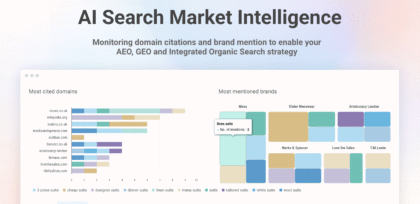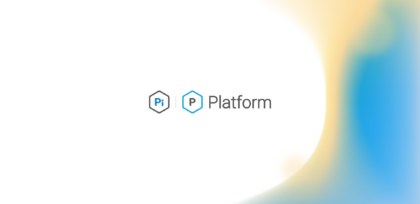How to opitimse YouTube Search: YouTube SEO ranking factors
23 Dec 2015|3 MIN READ
How do I optimise for Youtube search, and get my video to the top of You Tube?
There are a number YouTube SEO ranking factors to take into consideration when optimising your videos on You Tube - and contrary to popular belief, it's not all just about view count!
Companies spend billions on video content and video production companies, but many don’t get the views their budgets deserve. In fact, according to Business Insider, some 53% of YouTube's videos have fewer than 500 views.
YouTube:
- 200k videos uploaded per day
- 500 hours of video uploaded to YouTube every minute
- 100m videos watched daily
- 300m existing accounts
- 3rd most popular site in the world
- 2nd most popular search engine after Google
- Reach expanded by inclusion in Google Web, Video Search and Trends
How do I get to the top of YouTube search?
We've put together an SEO guide to help you better optimise the key YouTube SEO ranking factors on both your video and channel. This will help you climb the rankings in YouTube, and get your content out to the most relevant audience.
Pi Datametrics Position Explorer YouTube Channel Tracking
On-page (non-visible) YouTube SEO ranking factors
1. Video file name: YouTube registers the videos file name when attempting to distinguish the content, so as to return it in the most relevant search results. The point here is to make it appropriate and include your key search terms.
2. YouTube meta tags: YouTube videos are instantly indexed, but YouTube robots obviously can’t watch the videos themselves, so rely on subsidiary meta-data to interpret what the video is about. This is thought to be a big factor in determining the positions a video is able to achieve in YouTube. When you upload a video to YouTube you’ll have the chance to tag it with your keywords. 6-8 tags are thought to be the ideal amount.
3. View density over time: Obviously we can all see view count, but what about the time in which these views have accrued? Well, actually, some brands do enable that function on their videos, as below with John Lewis, but mostly this is a non-visible element which YouTube takes into consideration. According to ClickZ, the 48 hour window is the most important in determining ranking.
4. Watch time: Before 2012, quantitative metrics such as view count and comment volume were considered the primary qualifiers for YouTube success. However, both are subject to manipulation, such as spam comments and paid clicks, which YouTube has since realised. 2012 saw a seismic shift in video SEO, and many fell fowl of YouTube’s algorithm update, which saw watch time prioritised as its no.1 indicator of relevance and quality.
5. Flags/Reports: If your video has half a million views, yet has a minimal amount of comments and has been reported a bunch of times, this will overrule the positive view count, meaning your video probably won’t rank very highly.
On-page (visible) YouTube SEO ranking factors
1. Title: This should be approximately five words long. SEO tip: place your primary keyword as close to the beginning of the title as possible. This will give your video a boost in rankings.
2. Description: The description is one of the best places to tell both users and YouTube what your content’s all about. It’s also a good place to link to other brand assets. Descriptions should be around 250 words in length, with keywords included three to four times – and a least once in the first 25 words of the description.
1. View count: The amountof people that watch your video, and for how long are big factors in determining your presence in YouTube results pages.
2. Comments: Indicative of view time, comments suggest that viewers have engaged with the content enough to give their opinion. This sends a strong authority signal to YouTube.
However, YouTube can identify spam comments and may demote a video if it detects any.
The content of comments is also taken into consideration by YouTube in terms of ranking. One video may therefore rank higher than another for certain search terms, based on the word choice employed by users when offering their opinions of the video.
3. Thumbs Up/Down: Likes and dislikes are also indicative of engagement, and are another factor which YouTube takes into consideration when ranking.
4. Thumbnails: An apt thumbnail will be concurrent with your brand or campaign, meaning it’s easily recognisable, and more likely to be viewed when appearing in YouTube primary search pages or the suggestions side bar.
Although this doesn’t explicitly affect YouTube rankings, a high quality, aesthetically appealing thumbnail is important in encouraging click-throughs, which in turn affects ranking. The ideal size = 640 x 360 pixels minimum, 16:9 aspect ratio.
5. In-video annotations/YouTube cards: Annotations allow you to add linkable text to a video; including notes, calls to action, and links to related video assets. This serves to build greater authority and encourages CTR, views and shares. YouTube developed "annotations" in March 2015 to include “YouTube Cards” which are basically prettified annotations. The big difference is they work better across screens, and especially on mobile.
6. HD quality videos: YouTube gives preferential treatment to HD videos over low-quality videos in the search results, for obvious UX reasons. Poor quality videos will incur a loss in views and subscribers, and may also increase dislikes.
7. YouTube subtitles, closed captions and transcripts: YouTube permits this function for any video with dialogue. However, your transcript doesn’t have to be strictly dialogic– it can include other things like diegetic or non-diegetic sound, locations, and the names of the people speaking – almost like a theatre script.
This is a great opportunity to reach new audiences – such as the hard of hearing or (if you choose to include foreign subtitles) international audiences. Again, you’re providing good UX and simultaneously telling the YouTube what your video's about.
On-page (channel)YouTube SEO ranking factors
1. Branding: Branding your videos with bespoke intros and outros doesn’t directly impact video rankings, but it does increase brand authority and engagement, which can lead to more subscribers, shares and views. You can also apply a linkable watermark on all your videos to reinforce your brand further.
2. Suggested videos – Sidebar assets: If you have optimised your video assets well and consistently enough, then you can monopolise the suggestions sidebar. Sainsbury’s seem to understand YouTube SEO best practice, and have managed to do this for the majority of their videos, meaning they have achieved brand authority in the eyes of YouTube.
3. Subscribers and channel views: More subscribers and channel views patently translates as more content views and higher YouTube rankings.
4. Vanity URL: A vanity URL is usually a branded URL i.e. https://www.youtube.com/user/PiDatametrics. This is good for memorability and UX purposes. It goes without saying that if your channel is easy to find, then your content will be viewed more often and will rank higher. In November 2014, YouTube updated their policy on Vanity URLs – meaning that to meet the requirements you must now have:
- 500+ subscribers
- A 30+ day old channel
- A photo icon for the channel
- A banner for the channel
Off-page YouTube SEO ranking factors
1. Backlinks, embedded videos and social shares: Backlinks to your video will send out an authority signal to YouTube, as it suggests your content’s being discussed and shared on forums, blogs, journalistic sites etc. However, different types of links tend to carry different amounts of weight in YouTube. Here’s a list in order of priority:
- Embedded videos
- Links with anchor text
- Links without anchor text
- Social shares
Remember to embed your video into your other web assets (websites, forums etc.) and link via as many social channels as possible.
How do I track YouTube?
So, as you can see, there’s a mammoth amount of factors to take into consideration when trying to get your video to the top of YouTube. Which is why tracking your content, and analysing its levels of optimisation is becoming increasingly important. Better optimisation will mean increased UX and will contribute towards increased watch time, as it enables the right audience to find your content. Pi Datametrics, SEO technology tracks both videos and channels in YouTube, so that you are able to monitor the performance of all assets, and assess the impacts of any SEO strategies on ranking. It also helps you to identify your biggest competitors, and allows you to diagnose and remedy any optimisation issues in your video or channel.
Never miss a post
Join our mailing list and have our SEO news delivered straight to your inbox.




